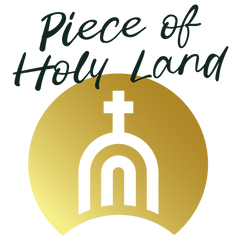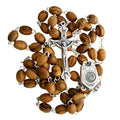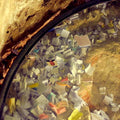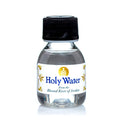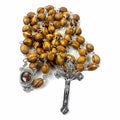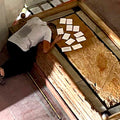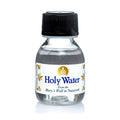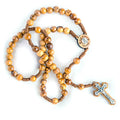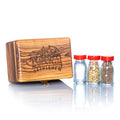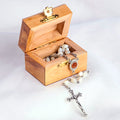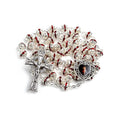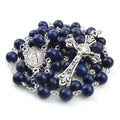Sea of Galilee | A Tapestry of History, Faith and Miracles
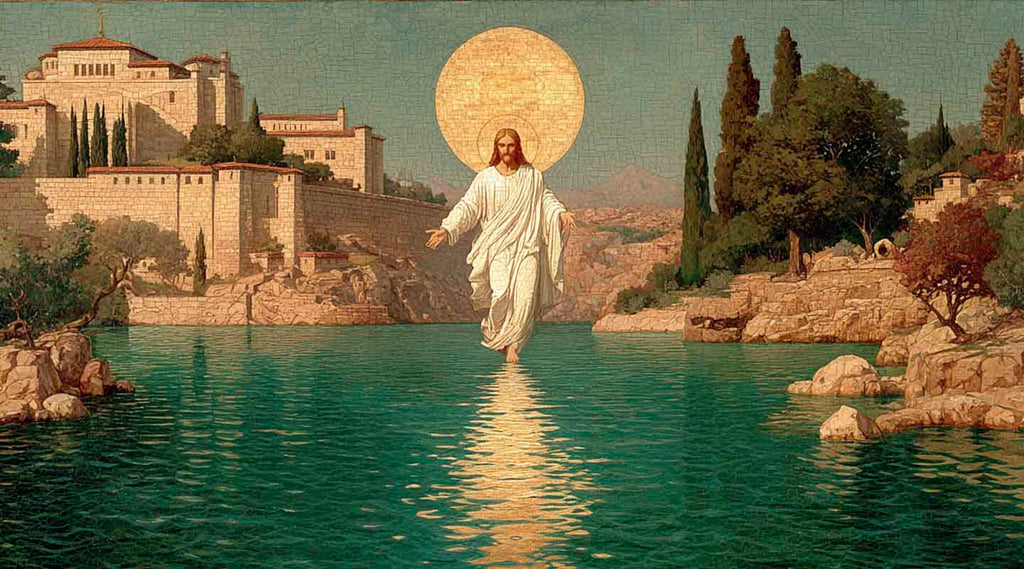
Sea of Galilee – The Lake Where Jesus Walked, Taught and Transformed Lives
A Stage for Jesus’ Galilean Ministry
After leaving Nazareth, Jesus made Capernaum, situated on the northern shore of the Sea of Galilee, His ministry base. In Isaiah’s prophecy this region is called “Galilee of the Gentiles,” and Matthew notes that Jesus settled in Capernaum to fulfil the words, “The people who sat in darkness have seen a great light” (Matthew 4:13–16). The lake’s fishing villages, including Capernaum, Bethsaida and Chorazin, were home to many of His earliest disciples.
Jesus deliberately chose this bustling trade region because the Via Maris, the ancient “Way of the Sea”, ran along the lake’s northern shore, connecting Egypt to Syria and the wider world. Historians note that Galilee, unlike Judea, was on the way to everywhere. By establishing His ministry on this crossroads, Jesus ensured that news of His teaching and miracles would spread quickly across continents.
Capernaum, The Sea of Galilee

Miracles on the Waves and Shores
Many of Jesus’ most iconic miracles occurred on or near the Sea of Galilee. On one stormy night, as His disciples struggled against the waves, Jesus came to them walking on the water (Matthew 14:22‑33; Mark 6:45‑52; John 6:16‑21). Terrified, they thought He was a ghost, but He spoke, “Take courage! It is I. Don’t be afraid,” and Peter briefly walked toward Him until fear overtook him. Another time, while Jesus slept in the boat, a fierce storm arose. Awakened by His disciples’ cries, He rebuked the wind and waves, and immediately there was a great calm (Mark 4:35‑41). These events reveal both His humanity, tired and asleep in the boat, and His divinity, commanding the elements.
On the shore, Jesus fed multitudes with meagre food: the miracle of the loaves and fishes took place near Tabgha, where He fed five thousand men plus women and children with five loaves and two fish. Another feeding of four thousand occurred on the eastern side of the lake (Matthew 15:32‑39). Along these beaches He also taught the Sermon on the Mount, delivered from a hillside overlooking the lake, and told parables from a boat anchored just offshore so that crowds could hear Him without pressing in.
The Sea of Galilee

A Hub of Healing and Authority
Capernaum’s synagogue was the setting for several dramatic healings and teachings. Jesus cast out a demon from a man there, and the people marvelled that He taught “as one having authority, and not like the scribes” (Mark 1:21‑28). In Peter’s nearby house He healed Peter’s mother-in-law, and crowds soon gathered with the sick and possessed (Mark 1:29‑34). He also healed a paralysed man lowered through a roof (Mark 2:1‑12) and restored the centurion’s servant with just a word. These acts demonstrated His authority over sin, sickness and spiritual bondage.
The centurion who built the synagogue loved the Jewish people, and his faith amazed Jesus. Luke records that Jewish elders pleaded with Jesus saying, “He loves our nation and has built our synagogue” (Luke 7:5). This moment underscores the cooperation between Gentiles and Jews in Capernaum and reveals the broad reach of Jesus’ message.
Ruins of the White Synagogue in Capernaum

Trade, Fishermen and Daily Life
It was along these waters that He called fishermen like Peter and Andrew, saying: “Come, follow me, and I will send you out to fish for people” (Matthew 4:19).
The lake teemed with species still known today as “St. Peter’s fish” (tilapia), barbel and catfish. Local fishermen speak of four types of fish: musht (tilapia), sardin (Kinneret bleak), biny (Jordan barbel) and catfish. Archaeological excavations reveal basalt houses arranged around courtyards, plastered floors and ovens, evidence of a thriving village life on the lake’s banks.
The lake’s strategic location also meant tax collectors and Roman soldiers were stationed nearby. Matthew, one of the twelve apostles, worked as a tax collector in Capernaum’s customs house until Jesus called him (Matthew 9:9). A Roman detachment garrisoned the town, and a centurion oversaw the building of the synagogue.
“Come, follow me, and I will send you out to fish for people” (Matthew 4:19)

The Sea in Early Judaism and Beyond
While the New Testament shines a bright light on the Sea of Galilee, its shores were also central to Jewish history. During the Iron Age, the Galilee belonged to the northern Kingdom of Israel until the Assyrians deported much of the population in the 8th century BCE. Later, during the Hasmonean period, the region became an area of settlement and conflict. By the time of Jesus, it was home to numerous Jewish villages, including Nazareth, Capernaum and Bethsaida. After the destruction of the Second Temple in 70 CE and the First Jewish Revolt, Galilee became a major centre of Jewish life; the Mishnah and Jerusalem Talmud were compiled in nearby Tiberias and Sepphoris.
During Byzantine times, churches such as those at Capernaum, Tabgha (Multiplication of Loaves) and the Mount of Beatitudes were erected. After the Arab conquest the area became part of Jund al‑Urdun, and the Crusaders later fought to control its shores. In the modern era, the Sea of Galilee remained a frontier between Mandate Palestine and the French Mandate of Syria; after Israel’s 1948 War of Independence and the 1967 Six‑Day War, the lake became an inland lake of Israel. Today, it supplies a quarter of Israel’s drinking water, and water-level fluctuations are closely monitored.
Tabgha

Interfaith Significance and Eschatology
For Jews, the sea’s towns hosted some of the oldest synagogues, reflecting a rich religious heritage. Christians revere it as the “fifth gospel,” where Jesus’s miracles and teachings come alive. Capernaum, the Mount of Beatitudes and Tabgha are key pilgrimage destinations. Muslims also consider the Sea of Galilee a significant site: Islamic traditions state that the lake will play a role in end‑times events, such as the arrival of Gog and Magog and the appearance of the Antichrist when its waters dry. Observing the lake’s water level thus carries eschatological importance in some Muslim interpretations.
The Sea as a Crossroads of Nations
The Sea of Galilee lies at the junction of four modern countries, Lebanon, Syria, Jordan and Israel. In antiquity, its location on the Via Maris ensured that goods and ideas flowed between Africa, Asia and Europe. Merchants traded spices, silk and grain along this route, and travellers from distant lands encountered the message of Jesus as they passed through. The interplay of cultures made Galilee a “district of nations,” fulfilling the prophecy of Isaiah 9:1.
Pilgrimage and Modern Tourism
Today, thousands of Christian pilgrims visit the Sea of Galilee each year to walk in the footsteps of Jesus. The Jesus Trail, a 65‑mile network of footpaths and roads, links Nazareth to Capernaum, enabling pilgrims to traverse the same landscapes that Jesus and His disciples trod. Many end their journey at the place where the Jordan River leaves the lake, a popular site for baptism and renewal of faith with Jordan River Holy Water. In addition to pilgrimage, the lake supports tourism through open-water swims like the Kinneret Crossing and recreational activities on its shores.
Bringing the Blessings Home
Standing on the Sea of Galilee’s shore is not feasible for every believer, yet its grace can still be experienced through prayer and devotional items from the Holy Land. Many pilgrims take home a small cross carved from olive wood, a tangible reminder of Jesus’s call to the fishermen. Our Jordan River Holy Water product brings authentic water from the Jordan River in the Holy Land, allowing believers to sanctify their homes and prayer life. The Jordan River Holy Water connects the Sea of Galilee with the river that feeds it, symbolising baptism and new beginnings.
Another meaningful keepsake is the God Bless Our Home Cross, a handcrafted olive‑wood cross engraved at the back with “Jerusalem” and the Stations of the Cross. Hanging this cross in your home echoes the faith of Capernaum’s early Christians who turned Peter’s house into a church.
Frequently Asked Questions about the Sea of Galilee
Q: Why is the Sea of Galilee sometimes called Lake Kinneret or Lake Tiberias?
The lake has several names reflecting different languages and eras. Kinneret appears in the Hebrew Bible, likely deriving from a word for harp because of the lake’s shape. Gennesaret or Kinneret became Ginosar in the Talmud, while in Roman times the city of Tiberias lent the lake the name Sea of Tiberias. These names highlight the cultural diversity of the region.
Q: What miracles did Jesus perform on the Sea of Galilee?
Several of Jesus’ miracles occurred here: He walked on water and calmed a storm, demonstrating authority over nature; He fed five thousand with five loaves and two fish near Tabghaj; He delivered the Sermon on the Mount overlooking the lake; and He healed multitudes in Capernaum’s synagogue and houses. After His resurrection, Jesus appeared to His disciples on the lake’s shore and provided a miraculous catch of fish (John 21:1‑14).
Q: How did the Sea of Galilee influence Jesus’ choice of disciples?
Many of Jesus’ earliest disciples were fishermen from villages around the Sea of Galilee. Andrew and Peter were casting nets when Jesus called them (Matthew 4:18‑22), and James and John left their father Zebedee in the boat to follow Him. Levi (Matthew) worked as a tax collector in Capernaum before becoming a disciple. The lake’s fishing economy thus provided the social network for Jesus to gather His core followers.
Q: Why is the Sea of Galilee important in Jewish history?
The Galilee region was part of the northern Kingdom of Israel until the Assyrians’ conquest in the 8th century BCE. After the Second Temple’s destruction, the region became a centre for Jewish scholarship, where the Mishnah and Jerusalem Talmud were compiled. Synagogues around the lake, such as those at Capernaum, exhibit elaborate architecture and provide insights into Jewish religious life.
Q: What role does the Sea of Galilee play in Islam?
Islamic traditions hold that the Sea of Galilee will play a role in end‑times events. Some Hadiths state that when the forces of Gog and Magog arrive, they will drink the lake dry, and the drying of the lake will herald the appearance of the Antichrist or Dajjal. Therefore, some Muslim scholars watch the water levels of the lake as part of eschatological speculation.
Q: How is the Sea of Galilee connected to the Jordan River?
The Jordan River feeds the Sea of Galilee from the north and flows out toward the Dead Sea in the south. Baptismal sites along the Jordan River near the lake attract pilgrims who wish to renew their baptism vows. Our Jordan River Holy Water bottle allows you to bring a piece of this sacred river into your home.
Q: Can visitors still see remains of the biblical towns around the Sea of Galilee?
Yes. Archaeological sites at Capernaum reveal basalt foundations of homes and the limestone synagogue where Jesus taught. Excavations at Bethsaida and Chorazin uncover first‑century houses, olive presses and ritual baths. The Mount of Beatitudes, Tabgha (site of the multiplication of loaves) and Magdala are preserved with chapels and visitor centres.
Q: What is the environmental status of the Sea of Galilee today?
Because the lake supplies a quarter of Israel’s drinking water, its level is carefully regulated. Overuse and drought lowered water levels in recent decades, prompting Israel to pump desalinated water back into the lake. Conservation efforts also aim to protect native fish species and restore wetlands that support migratory birds.
Q: Where can I learn more about related holy places?
Our blog on Capernaum explores the town Jesus called His own and explains why it became the hub of His ministry. You can also read about the Jordan River vs. Mary’s Well Holy Water to understand different sources of holy water and their significance. Both articles are available on the Piece of Holy Land Christian blog.
SHARE:

